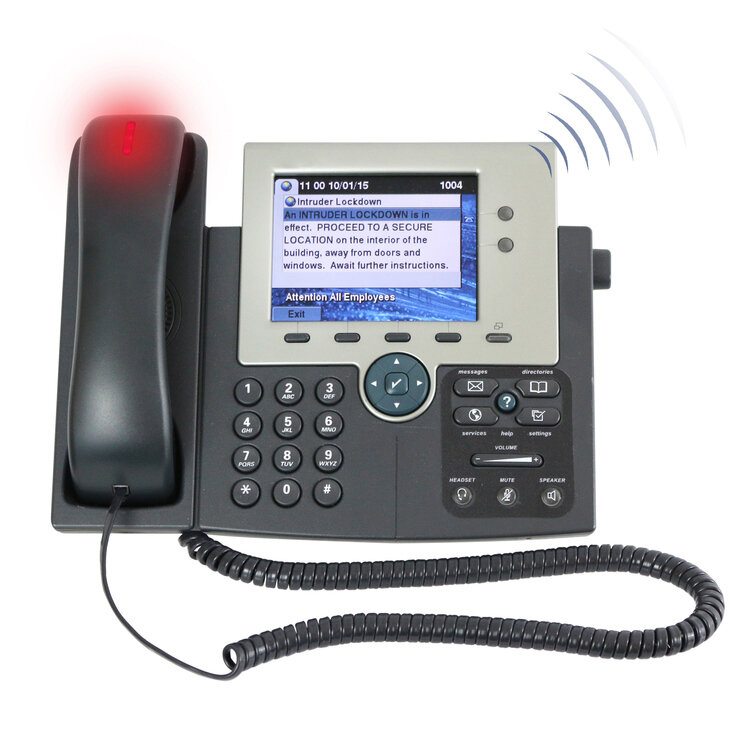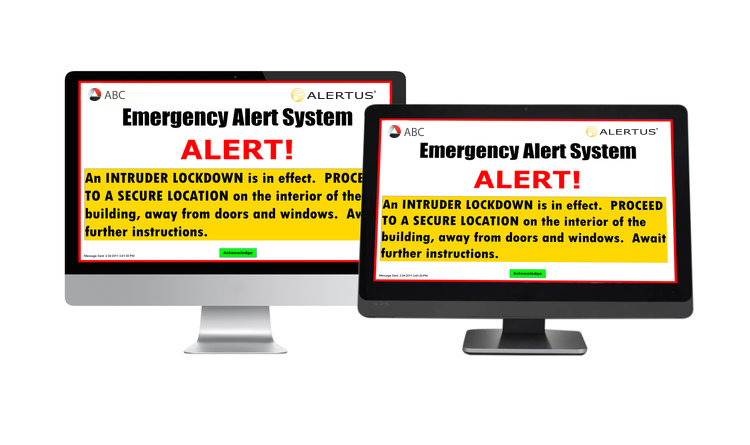Setting the Standard for Emergency Preparedness
Overview
Campus Type: Urban/Suburban/Rural
Enrollment: 21,000
Faculty/Staff: 7,000
Campus Size: 3000 acres
Number of buildings: 52 major buildings
Following the tragedy at Virginia Tech University in late 2011, the University of Saskatchewan felt that it was not adequately prepared for a similar emergency. Along with implementing the Alertus system, the university launched a series of emergency scenario drills to train and educate its emergency response team and campus population.
Challenge
Communicating with a Large Campus Community
With a campus population of nearly 30,000 students, faculty, and staff, the University of Saskatchewan needed to find a solution that would allow it to alert its entire population quickly. It initially relied on an internally developed text-messaging system to communicate to its population. However, the university felt the system could not notify people promptly during an emergency.
No Unified System
“Before we got involved in developing a true notification system, we relied on text messaging,” said Brian Muchmore, Director of Protective Services & Safety Resources at the University of Saskatchewan. “In our heads, we’re thinking, ‘it’s a way to notify the community in an emergency,’ but realistically, it wasn’t conducive to alerting people on time.”
The university already had digital screens, Cisco VoIP phones, and desktop computers. However, each system functioned independently and could not be utilized as an alerting method during an emergency. Muchmore said they wanted to tie all of their existing assets together and, from their emergency dispatcher’s point of view, create a single point of activation, an “easy button” approach, to simplify the process of deploying alerts.
Solution
The wall-mounted Alertus Alert Beacon® sounds, flashes, and displays an alert message in the event of an emergency.
The “Easy Button” Approach
When researching available solutions, the Alertus Notification System jumped out to Muchmore. “When we saw the Alertus’ System Overview, we thought, ‘that’s exactly what we’re looking for,’ said Muchmore. The university implemented the Alert Beacons® as well as the Alertus Desktop™ Notification and Alertus Mobile App.
This integration of existing infrastructure and new technologies is the foundation of the university’s notification system: the USafe Automated Alerting system.
The USafe Automated Alerting System
From a technology standpoint, the USafe Automated Alerting system is one of a kind in Canada. The dispatcher can instantly provide emergency messaging to many moving targets at once by utilizing a single activation point. From the system dashboard, the Alertus User Interface, the university can launch alerts from a computer, phone, or panic button to multiple endpoints—targeted messages to specific locations and mass alerts campus-wide.
The System in Action
For example, if launched during a lockdown scenario, the system can reach 5,200 Cisco handset phones, turning them into “mini-PA systems,” loud enough to be heard in offices and cubicles. It will also override the 8,534 PCs on campus. The same alert is pushed out to nearly 20,000 smartphones and activates 45 strategically placed Alert Beacons equipped with strobes, LED signage, and audio tones.
The Audit Trail is a powerful tool the university utilizes to monitor the system. Every USafe activation creates a report with time stamps, responses, statistics, and more. These reports show who launched the system, what methods were utilized when it was launched, and how it was delivered.
With its “easy button” activation and multi-modal system, the University of Saskatchewan does not have to activate, log on, or utilize multiple systems to get the message out over multiple layers during an emergency.
Integrating Safety and Preparedness into Campus Life
In 2012 the university committed itself to emergency planning by developing an Emergency Response template for all its colleges, schools, and administrative units. From these templates, the university conducts regular drills to test its system, prepare students, and teach staff how to respond in times of crisis.
Now the University of Saskatchewan has more than 200 personalized emergency response plans for likely scenarios such as lockdowns, chemical spills, severe weather, and medical responses. To take it a step further, once the generic responses were presented to the specific units, emergency response plans were personalized based on particular needs. For example, an emergency response for a severe weather situation would be different for an outdoor recreational area than a basement classroom, or the actions needed for a chemical spill in a lab versus a regular classroom.
In January 2013, the university conducted its first lockdown drill. Since then, the university has completed 14 lockdown drills; 12 were completed in 2015, with 1638 individuals participating. Eighteen exercises are scheduled for 2016.
“At first, staff and administrators were a little reluctant about participating in the drills, but now they seem to embrace them and say that it’s nice that people are physically running the drills instead of just putting up posters,” said Muchmore. “As we’re conducting training sessions with that group, they begin understanding that they have an important part to play [during the emergency].”
Communicating to the Campus Community
The drills are all initiated and monitored using the Alertus system. The Alert Beacons and Desktop Notifications are activated during a drill to give the campus population a chance to learn what to expect and how to safely follow the alerts’ directions during an emergency.
Using the actual alerting devices has also proven to better get people’s attention, and participants seem to take the drills far more seriously. “Before we had the Alertus System, we used whistles during the drill,” said Muchmore. “In the event of a real emergency, you’re not going to use a whistle. Now, when that beacon goes off, they realize, ‘oh wow, I need to do something’ — it’s like they get into character.”
The Alertus Activation App allows dispatchers to initiate the system even if they’re not in front of a computer. “We were in a staff meeting, and there was a drill,” said Muchmore. “One of the individuals could activate the whole system right from his phone.” The single-point activation streamlines the entire activation process, making it more reliable and efficient. When the University of Saskatchewan was building its activation plans, it set the baseline for end-to-end system activation — from the dispatcher receiving the call, setting up the dispatch, advising the supervisor, and activating the System — at 7 minutes.
Since they began the drills using the Alertus System, they have yet to surpass 2 minutes 30 seconds for a complete activation.
Conclusion
By implementing the Alertus system and installing Alert Beacons, the University of Saskatchewan was able to cost-effectively retrofit existing facilities and unify its existing infrastructure to create a comprehensive emergency mass notification system tailored to its unique needs. Using the system in conjunction with the frequent incident and location-specific emergency drills has allowed the university to set a new standard for campus safety and preparedness. Colleges and universities across Canada are now reaching out to the university to help create similar emergency response plans and training.
The University understands that you cannot reach everybody in an emergency. But by giving as many people the opportunity to become “echoers” by running them through all of these means, it is indeed going above the call of simple compliance. “I don’t think people realize that the University practices lockdowns over a dozen times per year and that they have so many audible and visual layers deployed on the system,” said Dan Bilodeau, National Critical Solutions Manager at Delco Security, who helped implement the Alertus solution at the University. “All of this is way above any necessary compliance or regulatory commitment — they do it because they want to be the leaders in safety.”






